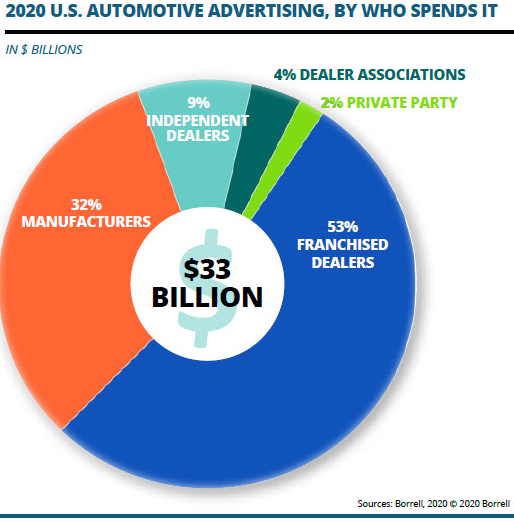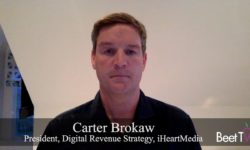ATLANTA — Automotive brands are seeing a major shift in radio advertising as the listener experience shift to on-demand streaming platforms. Instead of broadcasting to an entire region, dealerships can target the most likely vehicle buyers based on audience data and boost the performance of their campaigns.
“There are key differences today from a broadcast radio perspective and a streaming audio perspective,” Jeff Brown, chief revenue officer at Force Marketing, said in this interview with Beet. TV. “Traditional radio is still set up in a one-to-many marketing scenario — and that works for many brands. On the streaming audio side, though, this is where it really gets into personalization, and one-to-one relationships at scale.”
Because of its broad reach, terrestrial radio had been considered a way to bring consumers into the top of the “sales funnel,” after which there winnowed down toward the point of sale. With the targeting ability of streaming platforms like Spotify, Pandora and iHeartRadio that offer a variety of ad placements, marketers can engage consumers when they’re closer to a purchase decision.
“Audio has a terrific ability to create an emotional connection,” Brown said. With streaming audio, “you’re able to ascertain through data who are the people you’d like to speak to the most.”
Data-Driven Audience Profiles
To improve their targeting, car dealerships can find providers of consumer data that help to build audience profiles before activating a campaign.
“You can utilize third-party data providers. You can utilize companies like Tru Optik and their DMP [data management platform], where they have terrific audiences,” Brown said. “The beauty of streaming audio is you can build your audience first, and then through profile matching, you can then go find those audience members wherever they may be consuming streaming audio.”

Source: Borrell
The improved targeting also means that vehicle brands and car dealerships have more kinds of key performance indicators (KPIs) to measure the effectiveness of their campaigns on business outcomes. Instead of relying on traditional metrics like cost per thousand (CPM) impressions, marketers can track dealer visits with location data and measure what percentage of audience took action.
“We’re big believers that not all CPM’s are created equal. A cheaper CPM doesn’t necessarily mean success,” Brown said. “If we make these optimizations to this campaign, we believe that we can get more people into your dealership for less money per visit than we historically have been able to do. It’s making this a much more horizontal conversation around KPIs that are much closer to the purchase.”
You are watching “Advertisers: Turn Up the Volume on Streaming Audio,” a Beet.TV leadership series presented by TruOptik, a TransUnion company. For more videos, please visit this page.





































